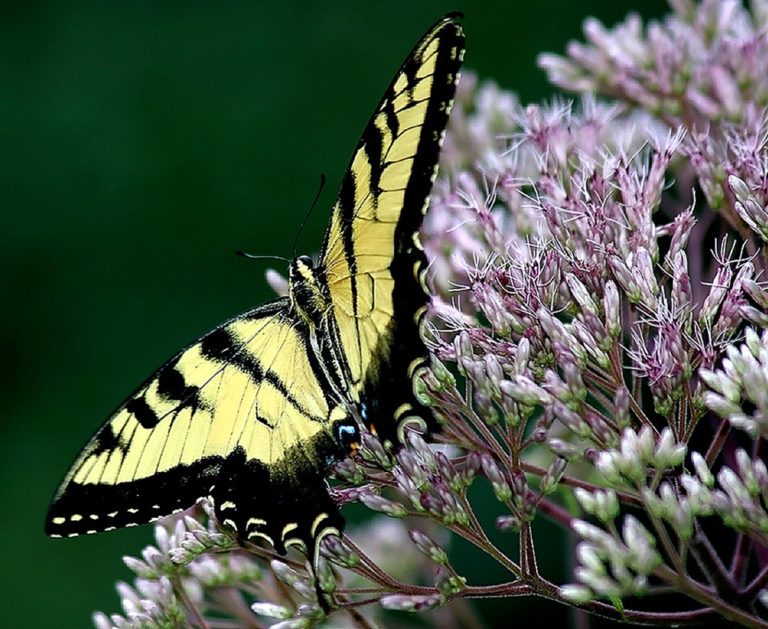Joe-Pye Weed is an impressive (six to nine feet), erect, sun-loving perennial which is found mostly in wet thickets and stream margins from Quebec to Texas. Leaves are lance-shaped and whorled around the hollow stem (a diagnostic character for the species). The stems, which are mostly unbranched, are green below with purple markings, turning more uniformly purplish above. The plant is dramatic looking in its color as well as its architectural height. It’s mauve, rosy pink, fragrant flowers appear as cone-shaped inflorescences on the purplish stems in late summer. It is excellent for attracting wildlife to the home landscape – birds, bees and butterflies flock to this plant!
NURSERY HOURS
Wednesday: 10-4 Thursday: 10-6 Friday-Saturday: 10-4 Sunday: 12-4
Eutrochium fistulosum

Key Info
Scientific Name: Eutrochium fistulosum (Barratt) E.E. Lamont
Common Names: Joe Pye Weed, Trumpetweed, Queen of the Meadow, Hollow Joe-pye Weed, Purple Thoroughwort, Tall Joe Pye Weed
Family Names: Asteraceae (Composite, or Daisy Family)
Plant Type: Herbaceous perennial
Flower Color: Mauve, Pink
Special Characteristics: Reported to be deer resistant., Good cut flowers, Attracts bees, Tolerates Black Walnut, Attracts butterflies, Tolerates wet conditions, Flowers fragrant
Additional Info
Habit: Erect. clump-forming; stems are dark purple to pale purplish white, stout, mostly unbranched, hollow, terete, glabrous, and glaucous with a white bloom, from a central crown. The root system is mostly fibrous, although sometimes rhizomes are produced.
Height: 5'-8'
Spread: 3'-4'
Soil Conditions: Moist well drained to Wet; soil can contain loam, sand, or gravel.
Leaves: Whorles of 5 or more elliptic or lance-shaped, serrated leaves up to 9" long occur at intervals along the stems. They are toothed, glabrous with sturdy, purple petioles.
Flowers (or reproductive structures: Flowers are terminal, dome-shaped compound panicles 1.5' x 1.0' across of deep rosy pink florets, which in turn are composed of 5-7 disk flowers (ray flowers absent).
Fruit: Seeds are small, bullet-shaped achenes with tufts of bristly hair for wind distribution in fall.
Natural Distribution: Moist fields, wood edges, streams, ditches wet sand prairies, seeps, soggy thickets, fens, and low areas along railroads and roadsides.
USDA Hardiness Zone: 3 to 9
USDA Wetland Indicator Status in NC: FACW
Pollination: Bees, butterflies, other insects
Wildlife Connections: Joe Pye provides nectar and pollen for bees, butterflies, skippers, moths and other beneficial insects. Seed heads attract birds for food and for nesting materials. The foliage in unpalatable to mammalian herbivores, but supports various lepidopteran caterpillars, treehoppers and beetles (Illinoiswildflowers.info).
Propagation: By cuttings or by division, which works well during dormant season.
